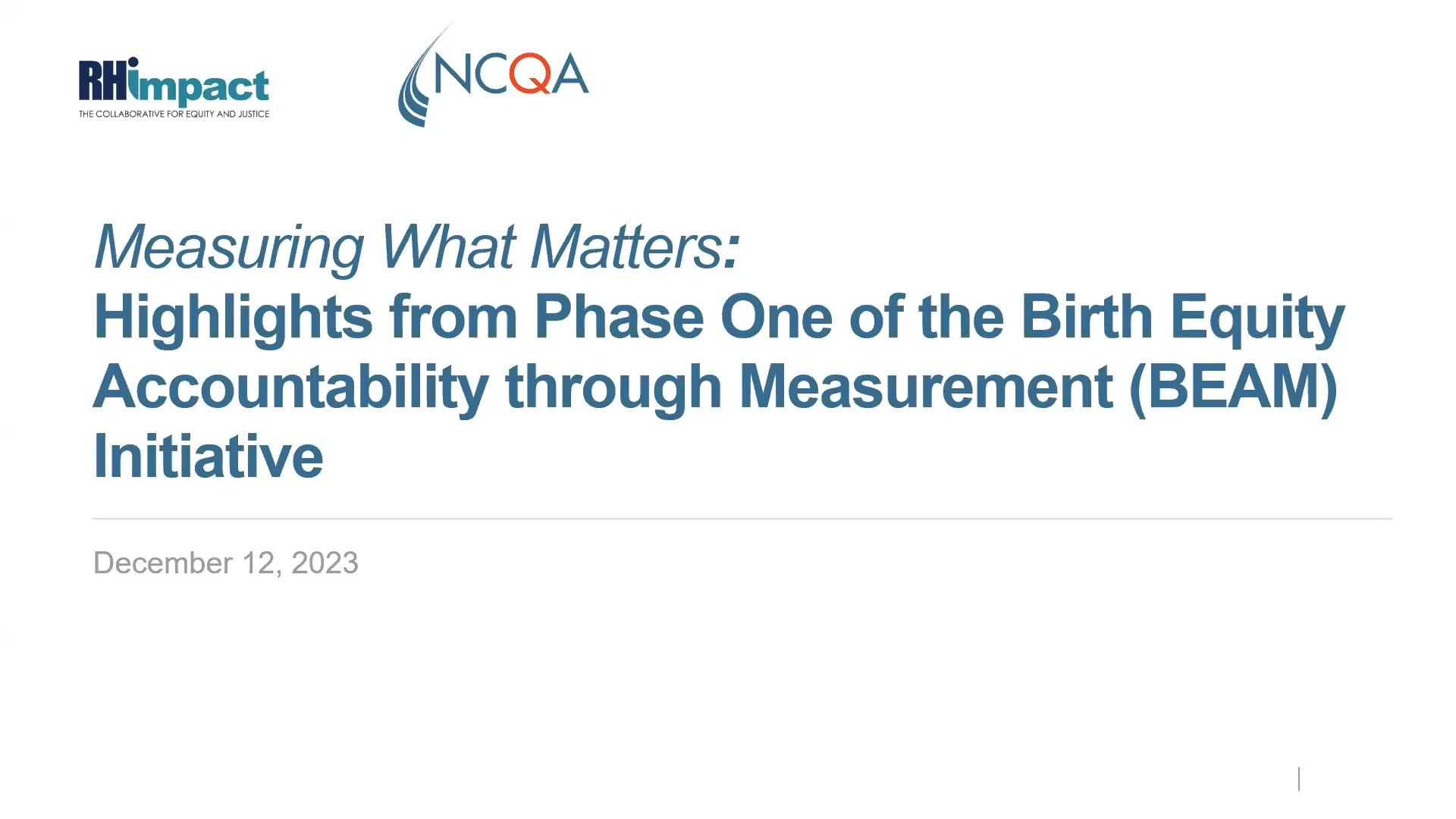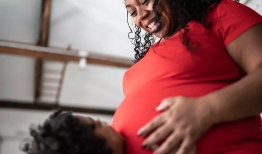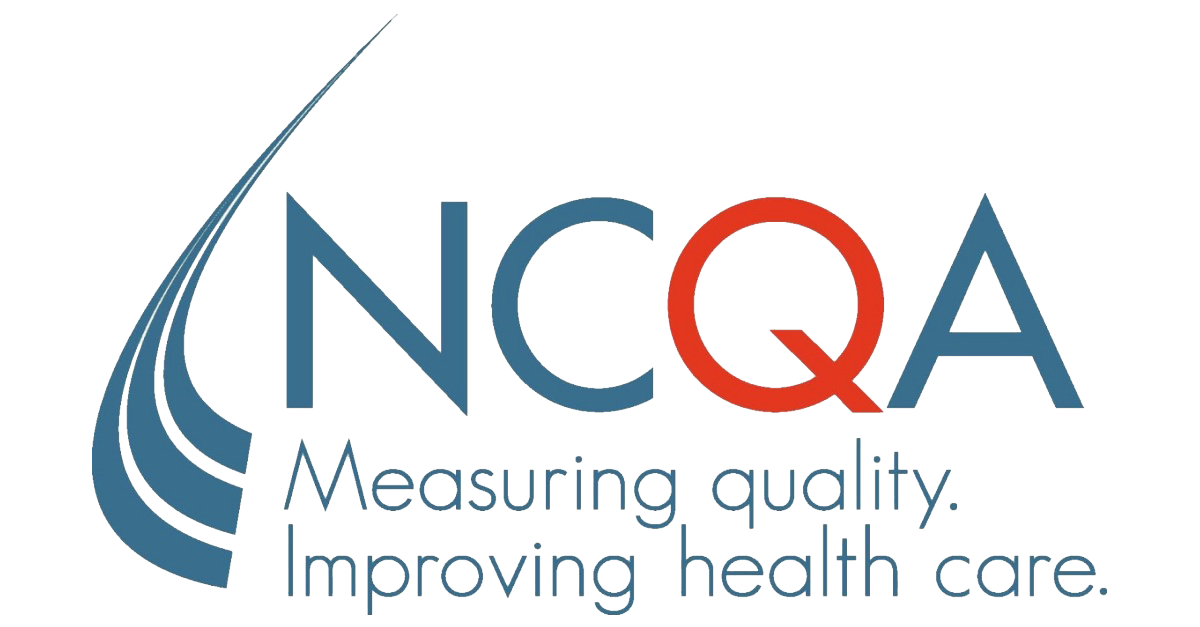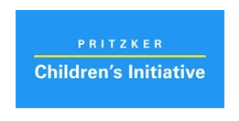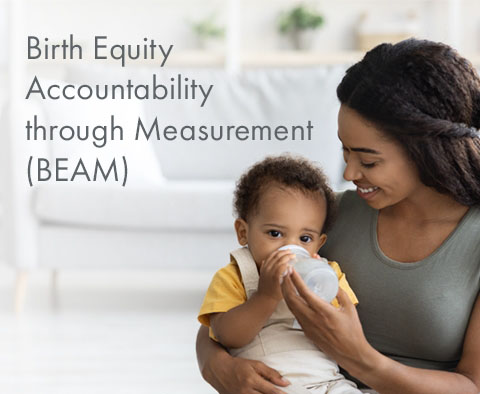
About BEAM
Evidence of persistent, large and increasing mortality gaps between Non-Hispanic Black and all other birthing people in the U.S., along with patient surveys and personal stories, highlight the role of racism in contributing to health care inequities.[1,2] Research points to persistent race-associated differences in outcomes among birthing people and existing quality measures are inadequate to highlight gaps and opportunities in this area. [2-4] Despite recent efforts to promote birth equity, there currently is no framework describing practices and standards for equity-centered measurement.
In a joint effort, the National Committee for Quality Assurance (NCQA) and The Praxis Project have partnered for the Birth Equity Accountability through Measurement (BEAM) initiative. The BEAM initiative aims to create, test, and implement a quality measurement approach that aligns levels of the health care system towards birth equity.
Novel to this work is the purposeful centering of the voices of Black birthing people as a foundation for birth equity measurement.
The main goals of the BEAM initiative are to:
Establish a strategy for measuring birth equity and promoting alignment across the health care system.
Develop and test a set of quality measures to address birth equity gaps.
Use learnings to inform national evaluation programs and measures for accountability.

Resources
BEAM activities included the conduction of an environmental scan and key stakeholder interviews to inform the development of the Birth Equity Measurement Framework. Summary reports on the environmental scan and framework can be found below.
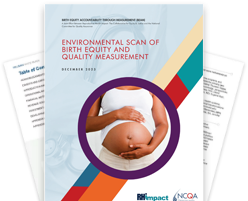
BEAM ENVIRONMENTAL SCAN REPORT
The Environmental Scan of Birth Equity and Quality Measurement Report summarizes the background and context for the development of an equity-centered measurement framework. This environmental scan employed a multifaceted approach to identify: 1.) the extent of perinatal health and health care disparities; 2.) evidence-based and proposed strategies for addressing perinatal health disparities; and 3.) the existing birth equity and maternal health measurement landscape.
Download the Report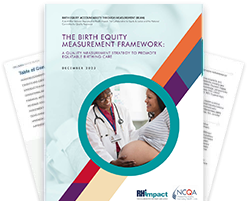
BEAM FRAMEWORK REPORT
This report summarizes BEAM Phase I activities and the conceptualization of the Birth Equity Measurement Framework. This dynamic framework represents guiding principles for birth equity measurement and illustrates what needs to be addressed to provide equitable birthing care, and who should be accountable for quality of care in the maternal health care system.
Download the ReportAdditional Resources
About Our Partnership
The BEAM initiative builds upon ongoing efforts across NCQA and The Praxis Project, drawing upon each organization’s expertise, networks and infrastructure to achieve national buy-in in a way that would not be achievable by either organization alone.
NCQA and The Praxis Project accomplish their complementary missions through systems-based approaches and by engaging diverse stakeholders. For example, NCQA recently released its Health Equity Accreditation programs to recognize organizations for applying standards to reduce health disparities. NCQA has also developed HEDIS® measures to allow comparison of health plan performance for perinatal care – these measures drive accountability and payment for health care services received by birthing people. The Praxis Project is a national leader in creating tools and solutions to illuminate and support organizational efforts to promote anti-racist models of care. For example, The Cycle to Respectful Care outlines an approach to engage birth equity stakeholders to create an actionable framework to dismantle biased practices as well as structural and institutional racism that contribute to discriminatory care.
NCQA and The Praxis Project are committed to lifting the patient voice, especially the voices of Black birthing people, to improve birth equity. Our strategic partnership aims to expand the expertise, resources and reach of our respective organizations.
Funders
We gratefully acknowledge the support of our Funders
References
- National Center for Health Statistics. Maternal Mortality. Atlanta, GA: Centers for Disease Control and Prevention; 2019.
- Petersen EE, Davis NL, Goodman D, et al. Vital Signs: Pregnancy-Related Deaths, United States, 2011-2015, and Strategies for Prevention, 13 States, 2013-2017. MMWR Morb Mortal Wkly Rep. 2019;68(18):423-429.
- Pham O, Usha R. Racial Disparities in Maternal and Infant Health: An Overview – IssueBrief. Kaiser Family Foundation; 2020.
- Wallace ME, Green C, Richardson L, Theall K, Crear-Perry J. Look at the Whole Me: A Mixed-Methods Examination of Black Infant Mortality in the US through Women’s Lived Experiences and Community Context. Int J Environ Res Public Health. 2017;14(7).


